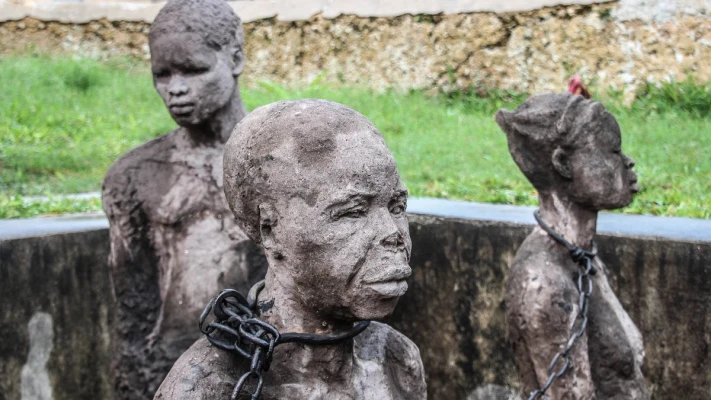Rejecting Compromise: Nkrumah’s...
November 20, 2025

The Transatlantic Slave Trade stands as a grim chapter in human history, characterized by the systematic and brutal exploitation of millions of Africans for economic gain.
The origins of the transatlantic slave trade can be traced back to the 16th century when Portuguese ships began transporting enslaved Africans to work on sugar plantations in the Cape Verde and Madeira islands. Spanish conquistadors further expanded the trade by bringing enslaved Africans to the Caribbean after 1502. For over a century and a half, Portuguese merchants dominated the trade from their bases in the Congo-Angola region along the west coast of Africa.
In the 17th century, the Dutch emerged as prominent traders of enslaved people, followed by English and French merchants in the 18th century. These European powers controlled vast territories in West Africa, between the Sénégal and Niger rivers, from where they captured and transported enslaved Africans to the Americas.
The transatlantic slave trade operated within the framework of the triangular trade, where European goods such as arms, textiles, and wine were traded for enslaved Africans in Africa. These captives were then transported across the Atlantic Ocean to the Americas, where they were sold into slavery. The profits from the sale of enslaved people were used to purchase commodities such as sugar and coffee, which were then shipped back to Europe.
The transatlantic slave trade had devastating consequences for Africa, leading to economic incentives for tribal conflicts and the destabilization of societies. The trade disrupted local economies and agricultural development, as millions of people were forcibly taken from their homes. Women in their childbearing years and young men, who would have contributed to their communities' growth, were particularly targeted.
Historians have debated the extent of European and African involvement in the capture of enslaved people. Initially, the Portuguese relied on Africans enslaved during tribal wars, but as demand grew, they began forcibly capturing captives themselves. European merchants on the coast purchased these captives from African traders, leading to long and arduous marches to the coast, where they were loaded onto slave ships.
The Middle Passage, the journey across the Atlantic, was notorious for its brutality and inhumane conditions. Enslaved Africans were packed tightly below deck, chained together, and subjected to overcrowding, unsanitary conditions, and disease. Historians estimate that between 15 and 25 percent of captives died during the voyage, which could last from a few weeks to several months.
The trade also witnessed widespread atrocities and sexual abuse of enslaved captives, as well as instances of revolt and resistance. The trade's profitability led to the dehumanization and commodification of human lives, as evidenced by incidents such as the Zong massacre in 1781, where enslaved Africans were thrown overboard to claim insurance money.
Efforts to abolish the transatlantic slave trade gained momentum in the late 18th and early 19th centuries, fueled by growing abolitionist movements in Europe and the Americas. The British outlawed slavery throughout their empire in 1833, and Brazil followed suit in 1850. However, the trade persisted illegally until the late 19th century, despite concerted efforts to suppress it.
The transatlantic slave trade left an indelible mark on the societies it touched, shaping economies, politics, and cultures across Africa, Europe, and the Americas. It fueled the growth of industries and institutions in modern North America and Europe, while also perpetuating cycles of violence, exploitation, and inequality that continue to resonate today.
The transatlantic slave trade left an indelible mark on human history, with its echoes still reverberating in the societal, cultural, and economic structures of nations. Understanding this dark period is essential for acknowledging the resilience and strength exhibited by those who endured unimaginable suffering and for recognizing the lasting impact on the interconnected destinies of Africa, Europe, and the Americas.
November 20, 2025
November 17, 2025
November 13, 2025
November 6, 2025
November 5, 2025
November 4, 2025
October 31, 2025
October 30, 2025
October 30, 2025
October 30, 2025